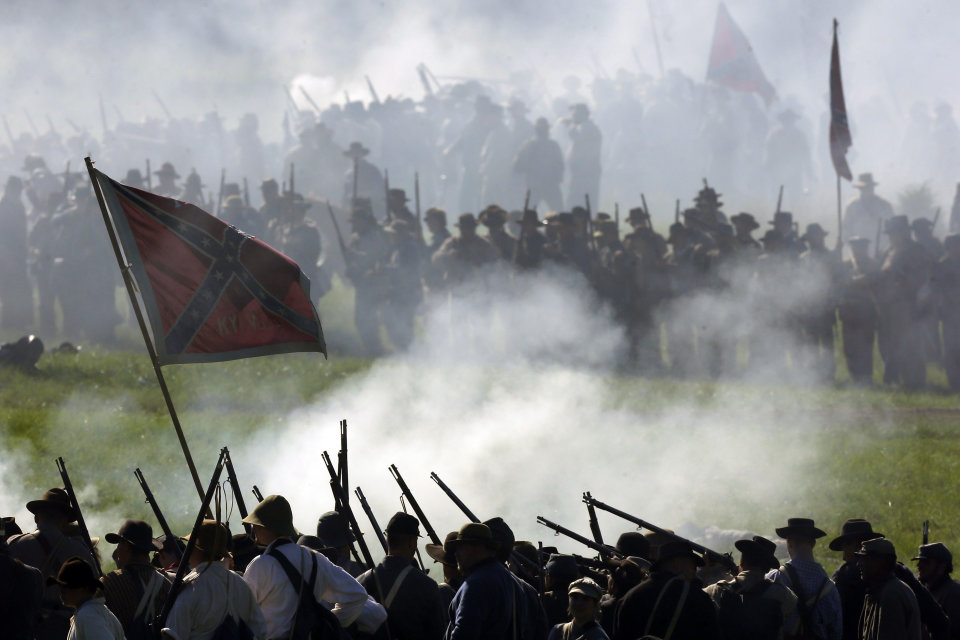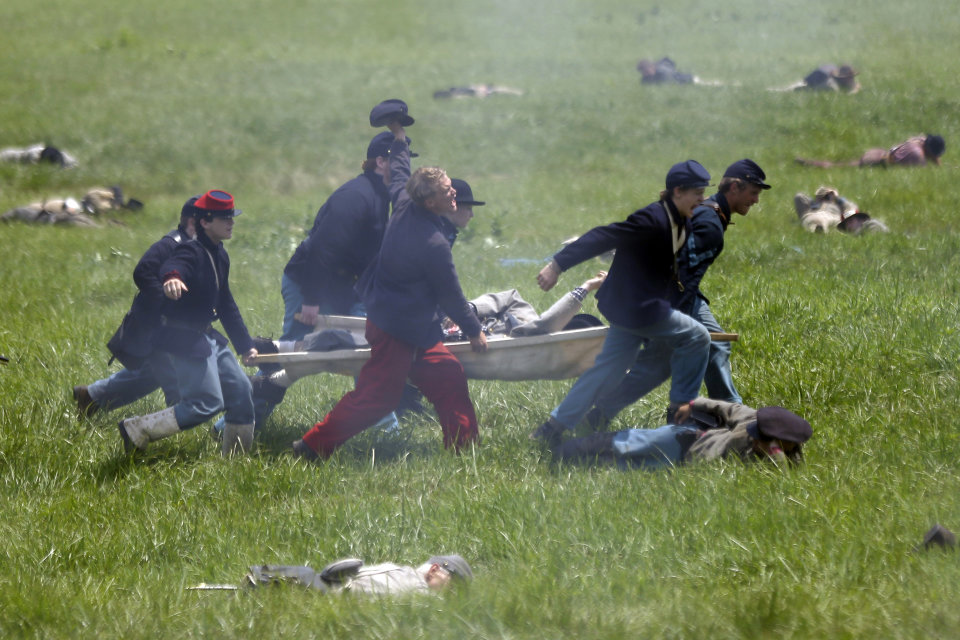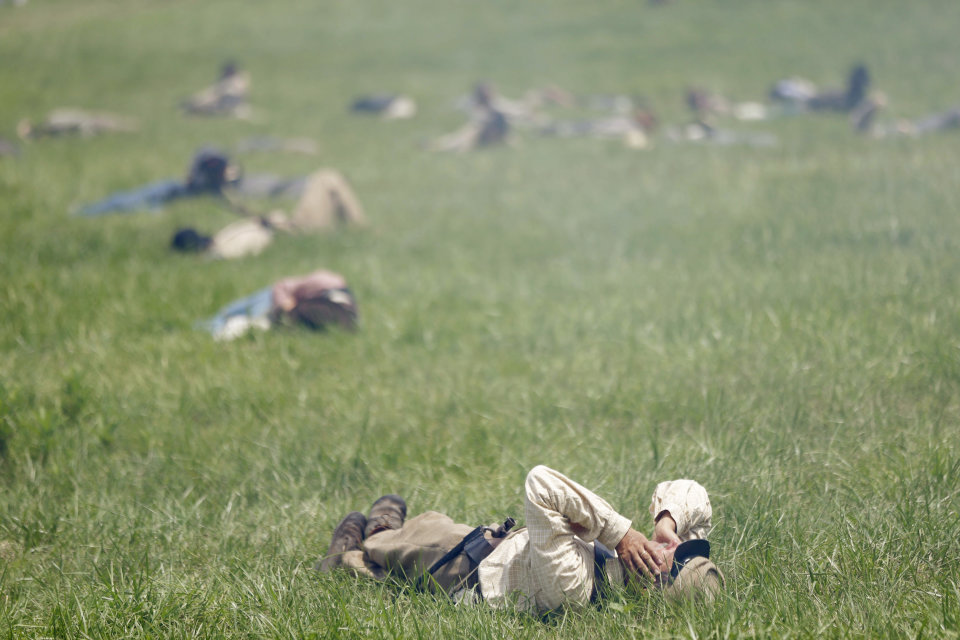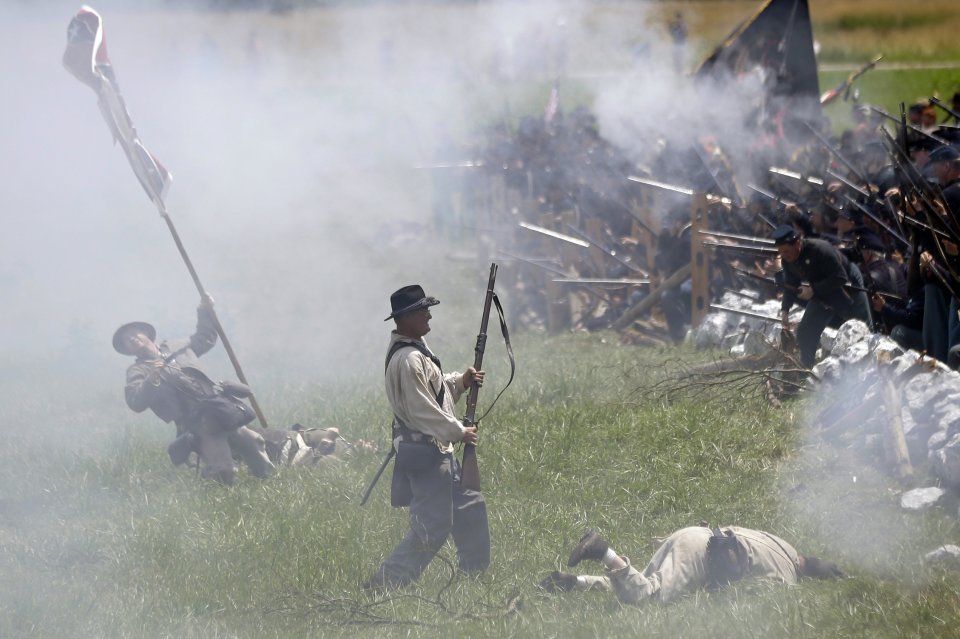
By Genardo C Armas
You're a Civil War re-enactor carrying an authentic musket, out on the
field with your history-buff buddies making a charge under withering
enemy fire. It's great fun except for one thing:
Someone's going to have to "die."
And
lying motionless in the grass on a sultry July day in a historically
accurate wool uniform while others are performing heroic deeds all
around you does not always make for an exciting afternoon.
That's
why deciding who lives and who dies — and when they must fall — is one
of the heaviest responsibilities a pretend commander at a Civil War
re-enactment is likely to face.
"That is the age-old re-enacting
question, and that is a tough one," said Bob Minton, commander of the
Union re-enactor forces last weekend at Gettysburg, the small town where
the pivotal battle between North and South was waged on July 1-3, 1863.

For
those whose hobby is dressing up in the blue and gray of the Union and
the Confederacy, the Battle of Gettysburg is the pinnacle, and this
week's 150th anniversary events are a very big deal.
Re-enactors
are sticklers for historical accuracy, but sometimes, in the heat of
battle, things go awry. Some people, especially those who might have
traveled a long ways for the event, don't want to get shot, bayoneted or
put to the sword a mere five minutes into a scene and miss all the fun,
and so they keep on marching.
To make sure things unfold
realistically, some re-enactor groups draw up scripts and work things
out ahead of time with the corresponding enemy unit, deciding in advance
who will be asked to give what Abraham Lincoln would later call "the
last full measure of devotion."
Sometimes, casualties are
determined according to participants' birthdays: Everyone born in April,
for instance, might fall 10 minutes in; those in October might go down a
half-hour later.
Donald Shaw of Flint, Mich., said some units
designate which soldiers will fall on the battlefield by slipping black
cartridges at random into their ammunition boxes before the fighting
starts. Other times, he said, an officer might start ordering men on the
spot to "start taking hits."

Dying gives re-enactors a chance to do a little acting.
The
enemy fires, "you wait two or three seconds for the ball to get to you
and you go 'Aarggh!,'" Union artilleryman Alan Mazur of Columbus, Ohio,
said Wednesday, tilting his head and stretching out his arms.
During
the Civil War, most wounded soldiers didn't die right away; many
languished in hospitals. To account for that, some re-enactor units make
up cards or slips of paper with different scenarios written out. Some
people might be instructed to die on the spot. Other cards might call
for a wounded man to slowly make his way off the battlefield.
Often, not even the commanding officers know what's going to happen with the rank-and-file — just like in real life.
"It's planned chaos!" said Evan Myers, a Union artilleryman from Pittsburgh.

One advantage of a big event like Gettysburg is that there will be a
lot of fighting to re-enact, ensuring that someone who goes down early
one day might be allowed to live until the end on another day.
This
being a major milestone anniversary, "this is our last chance, our last
opportunity, to give everybody a rewarding experience," said
65-year-old Stan Daywalt of Winchester, Va.
Of course, getting
"killed" isn't so bad sometimes, especially when it's 90 degrees out,
the wool uniform is getting uncomfortable and the legs are weary.
Lloyd Lamphere, 74, of Durand, Mich., said it's the perfect time to take a break.
"It's hot, I'm tired," Lamphere said, "and it's time to watch what's going on."
No comments:
Post a Comment